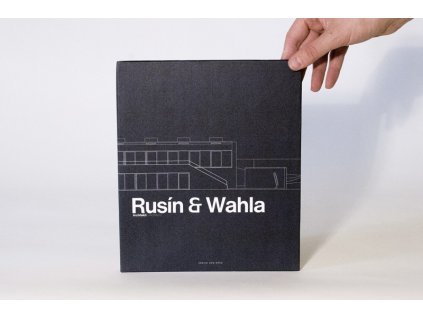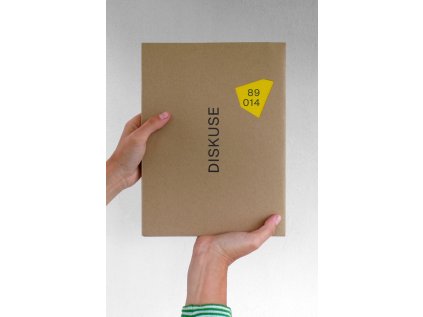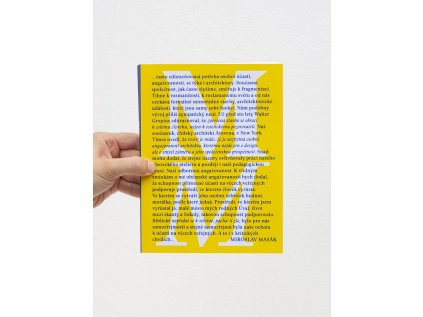OBSAH:
Yvette Vašourková: Ekologie a udržitelný rozvoj: časová osa
Dalibor Hlaváček: Přírodní materiály: historie nebo naděje?
Josef Pleskot: Dolní oblast Vítkovice
Yvette Vašourková: Trvalá adaptabilita
Roman Koucký: Regublina
Pavla Melková: Trvale udržitelný rozvoj znamená existenci možnosti
Pavla Melková a Miroslav Cikán / MCA / Recyklace
Oldřich Hozman: Cesta k celostnímu utváření prostředí
Oldřich Hozman: Dva projekty
Norbert Schmidt: Chudoba a architektura
Štěpán Špoula: Zahrada v krajině – meze udržitelnosti
Editorial
Před čtyřiceti lety, v roce 1972, vyšla kniha Meze růstu. Je shrnutím výsledků stejnojmenného výzkumu, jehož jádrem bylo vytvoření počítačového modelu pro simulaci vztahu mezi exponenciálním růstem populace a ekonomiky na straně jedné a omezenými zásobami zdrojů na naší planetě na straně druhé. Kniha vzbudila velký ohlas, protože v době všeobecného technologického a ekonomického optimismu předložila výsledky výzkumu, který jasně říkal, že rozvoj na naší planetě nemůže pokračovat do nekonečna stejným směrem a tempem jako doposud. Ačkoli se Meze růstu staly i terčem kritiky zejména z akademických pozic, z hlediska metodologie výzkumu, nad negativními ohlasy vysoce převážily ty, které braly závěry výzkumu jako vážné varování. Téma limitů růstu se stalo důležitou součástí společensko-politické debaty, jejímž klíčovým vyústěním byl koncept „trvale udržitelného rozvoje“, postulovaný v Brundtlandském dokumentu v roce 1987 jako „rozvoj uspokojující dnešní potřeby bez omezování budoucích generací v uspokojení jejich potřeb.“
Udržitelný rozvoj je komplexní úkol, který zasahuje všechny obory a oblasti života společnosti. V architektuře se debata o udržitelnosti velice často omezuje pouze na stavební a technologické aspekty díla, které jsou snadno kvantifikovatelné a kontrolovatelné. Změna, která má umožnit naší civilizaci přežít, se ovšem nemůže odehrát pouze v kvantitativní rovině: je zapotřebí změna kvalitativní. Změna v přístupu k životu a k hodnotám. V tomto čísle časopisu Zlatý řez jsme se pokusili naznačit některé možnosti takové proměny, které jsou architektuře vlastní anebo s ní úzce souvisejí. Na následujících stránkách se dočtete o adaptabilních budovách, o historii tohoto konceptu a jeho modernistických základech i současných reálných možnostech. Najdete zde různé pohledy na využití přírodních materiálů a přírodních principů v architektuře, recyklaci a revitalizaci stávajících budov i celých areálů. Dozvíte se něco o tom, jak praktikují udržitelnost (aniž tomu tak říkají) řeholníci, kteří si zvolili dobrovolně život plný materiálních omezení. A konečně se dočtete i o vztahu zahrady a krajiny a o tom, jak se místo v krajině ustavuje nejen formálně, ale také společensky. Ať je vám toto vydání Zlatého řezu inspirací pro udržitelnou architekturu i život.
Editorial
Forty years ago, in 1972, the book “The Limits to Growth” was published, a summary of a research project bearing the same name intended to create a computer model for the simulation of the relationship between exponential population growth on one hand and our planet’s limited natural resources on the other. The book sparked much debate, because in a period of general technological and economic optimism it presented research results that clearly demonstrated how development on our planet cannot infinitely continue in the same direction and in the same tempo as before. Though “The Limits to Growth” was the target of criticism largely from academic positions and in terms of its research methodology, a far larger part of its readership took the findings as a serious warning. The theme of limitations to growth became an important part of social and political debates, leading most importantly to the concept of “sustainable development” postulated in the Brundtland Document from 1987 as “development that meets the needs of the present without compromising the ability of future generations to meet their own needs“
Sustainable development is a complex task, involving all disciplines and areas of social life. In architecture, the sustainability debate is frequently limited merely to the construction and technical aspects of buildings, which are easily qualified and controlled. Yet any change that would allow our civilisation to survive understandably cannot only take place on the quantative level: there is a need for a qualitative change. A change in our approach to life and to our values. In the present issue of Zlatý řez, we have attempted to indicate several possibilities for such a change, which are part of architecture or closely related to it. On the following pages, you can read about adaptable buildings, the history of this concept and its foundations in the Modernist movement, as well as its current realistic possibilities. There are also various views of the use of natural materials and natural principles in architecture, or the recycling and revitalising of earlier buildings or entire complexes. Discussion is also provided on how (without actually using the term) sustainability is practiced by monastic orders who have willingly chosen a life full of material restrictions. And finally, you can read about the relation between the garden and the landscape, and how the space in a landscape is formulated not only formally but no less socially. Let us hope that this issue of Zlatý řez gives inspiration for sustainable architecture and life.
| Category: | Architecture |
|---|---|
| The item has been sold out… | |
Be the first who will post an article to this item!













